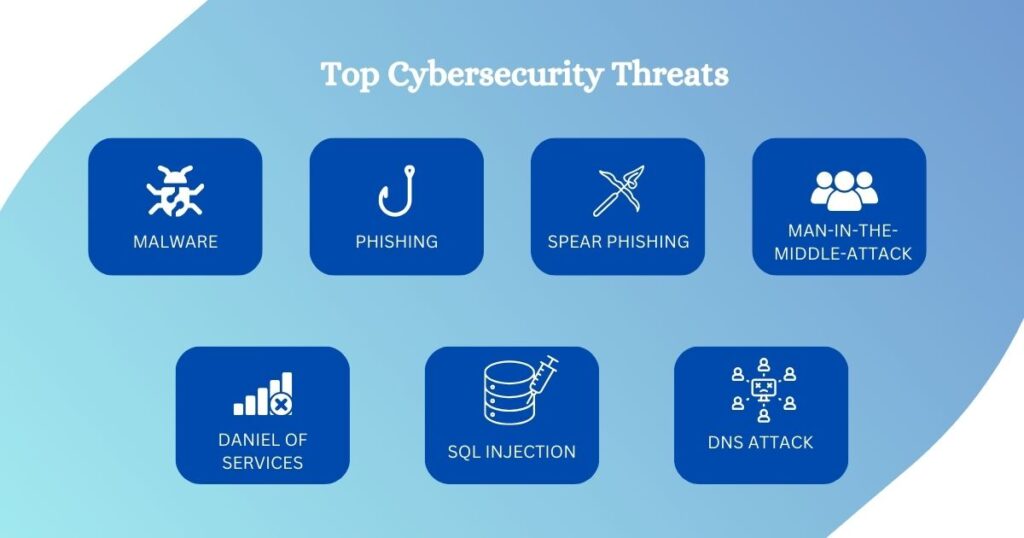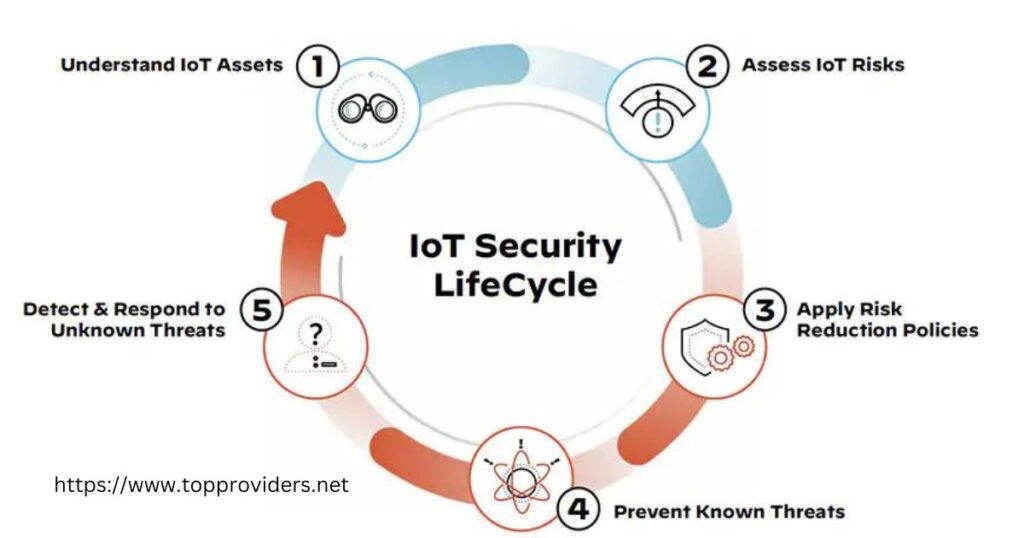
Today, home networks do more than connect to the internet. With smart devices, home automation, and remote work, our homes are more connected than ever. However, with this, there are more cybersecurity risks. Hackers can find weak spots in home networks to steal personal info, invade privacy, or mess up connected devices. Protecting your home network is essential to keep your digital life safe and secure.
This detailed article will examine simple ways to protect your home network from cyber attacks. We will discuss setting up secure routers, safeguarding your data, and managing your connected devices.
The Growing Importance of Home Network Security
With more internet-connected devices, home networks have become a big target for hackers. They often target home users because their security is usually weaker than that of big companies. This makes home networks easy targets for identity theft, financial fraud, or ransomware. Since many people now work from home, securing home networks is essential to protecting personal and work data.
Hackers can use your home network to access more extensive company systems if your home network isn’t secure. Knowing the risks and how to stop them is essential.
Understanding the Threat Landscape
Types of Cyber Threats
Home networks are vulnerable to a variety of cyber threats. Here are some of the most common types:
- Malware: Malware, like viruses, ransomware, and spyware, can enter your network through harmful websites, emails, or infected devices. Once it’s in, it can steal your data, mess up your devices, or lock you out of your system.
- Phishing: Phishing attacks usually involve fake emails or messages that trick you into giving away important information, like passwords or credit card numbers. This is a common way hackers attack home networks.
- Man-in-the-Middle (MITM) Attacks: In an MITM (Man-in-the-Middle) attack, a hacker gets in the middle of the connection between your device and the internet. This lets them spy on your actions, steal your info, or add harmful data to your network.
- Denial of Service (DoS) Attacks: In a DoS (Denial of Service) attack, a hacker overwhelms your network with too much traffic, making your internet slow or completely unusable. This can mess up your home automation systems, smart devices, and more.
- Unsecured IoT Devices: Smart devices like cameras, thermostats, and light bulbs can be easy targets for hackers if they need to be appropriately secured. Hacked devices can attack your network, spy on you, or give hackers access to the rest of your network.

Common Entry Points for Attacks
Understanding where attacks come from is the first step in protecting your network. Common entry points include:
- Routers: The router is the gateway to your home network. It can be a vulnerable entry point for hackers if it’s not secured correctly.
- Wi-Fi: Weak or outdated encryption standards (like WEP) make Wi-Fi networks susceptible to eavesdropping and unauthorized access.
- Connected Devices: Laptops, smartphones, smart TVs, and IoT devices can all be compromised if not properly secured or updated.
- Default Passwords: Many devices come with factory default passwords that are easily accessible to hackers. If these are not changed, they can be used to gain access quickly.
Steps to Protect Your Home Network
Secure Your Router
The router is the cornerstone of your home network, and securing it should be your priority. Here’s how:
- Change Default Router Credentials: Routers come with default usernames and passwords that are often easy to find online. First, change these to a solid and unique username and password.
- Use Strong Encryption: Make sure your router uses WPA3 encryption, which is the newest and safest. If your router doesn’t support WPA3, then WPA2 is the next best option.
- Disable Remote Management: Some routers let you manage them from far away. If this is turned on, it can give hackers another way in. Could you turn it off unless you need it?
- Update Firmware Regularly: Router makers release updates to fix security problems. Check for and install these updates regularly to keep your router safe.
- Enable Firewall Features: Most new routers have built-in firewalls. Make sure these are turned on to add extra protection.
- Network Segmentation: Set up a separate guest network for visitors or smart devices. This keeps your primary devices, like computers and phones, separate from less secure devices like smart home products.
Strengthen Wi-Fi Security
Wi-Fi security is critical, as it’s the medium through which most of your devices connect to the internet. To secure your Wi-Fi:
- Use a Strong Wi-Fi Password: Pick a strong password that’s hard to guess. Don’t use personal info like your address or phone number.
- Hide Your Network: Consider turning off SSID broadcasting so your Wi-Fi doesn’t appear in the available network list. This will not stop serious hackers, but it can keep less serious ones away.
- Limit Wi-Fi Range: Lowering your Wi-Fi signal range keeps it from reaching too far outside your home, making it harder for people outside to access your network.
- Enable MAC Address Filtering: This feature lets you choose which devices can connect to your network, giving you extra security.
Protect Your Devices
Securing individual devices connected to your home network is as important as securing the network itself. Here are key strategies:
- Keep Software Updated: Update the Software, apps, and Firmware on all your devices. Many updates fix security problems.
- Install Antivirus Software: A good antivirus program can find and remove harmful Software before it causes any damage.
- Use a VPN: A VPN hides your internet activity, making it harder for hackers to see your data. This is especially helpful when you use public Wi-Fi to connect to your home network.
- Implement Two-Factor Authentication (2FA): Turn on 2FA (two-factor authentication) whenever you can to log into devices and online services. It adds extra security by requiring a password and a second check.
Secure IoT Devices
The Internet of Things (IoT) includes smart home devices that can be easily compromised if not properly managed. Follow these best practices:
- Change Default Credentials: Like with your router, change all your smart devices’ default usernames and passwords.
- Disable Unnecessary Features: Many smart devices have features like remote access or automatic updates that you might not need. Turn off any features you don’t use to reduce security risks.
- Update Firmware: Device makers often release updates to fix security problems. Make sure to update your smart devices when needed.
- Monitor Device Activity: Check your router’s admin panel to see how your devices are used. If you see anything strange, disconnect the device immediately.

Firewalls and Intrusion Detection Systems (IDS)
A firewall helps protect your home network by blocking harmful traffic. Many routers have built-in firewalls; you can also add extra protection by installing firewall software on your devices.
An Intrusion Detection System (IDS) can warn you about strange network activity, such as unauthorized logins or unusual data transfers. While often used in businesses, easy-to-use versions are also available for home use.
Backup Data Regularly
In the event of successful cyber attacks, having recent backups of your data can be a lifesaver. Here’s how to effectively manage backups:
- Use External Drives: Store backups on an external drive that is not constantly connected to your network. This will protect the backup from being infected by malware or ransomware.
- Cloud Backup Services: Many cloud services offer encrypted backups, providing an additional layer of security. Ensure the cloud service provider you choose has robust security protocols.
Educate Household Members
Even with all the tech security in place, mistakes by people can still be a significant risk. Make sure everyone in your home knows how critical cybersecurity is and follows these basic rules:
- Recognise Phishing Attempts: Train household members to recognise and avoid phishing emails, which often appear from legitimate sources but contain malicious links.
- Use Strong Passwords: Encourage using complex, unique passwords for different online accounts. Password managers can help store and organize passwords securely.
- Avoid Downloading Untrusted Software: Discourage downloading Software or apps from untrusted sources, as they may contain malware.
Advanced Security Measures
For those looking to take their home network security to the next level, here are some advanced strategies:
- Network Monitoring Tools: Tools like Fing or GlassWire allow you to monitor traffic on your network, helping you detect unusual activity.
- Advanced Firewalls: For additional protection, some users may opt for more advanced hardware firewalls, such as Ubiquiti’s UniFi series.
- Use Encrypted DNS: Instead of relying on your ISP’s DNS servers, which may not be secure, consider using a privacy-focused, encrypted DNS service like Cloudflare’s 1.1.1.1 or Google Public DNS.
- Disable WPS: Wi-Fi Protected Setup (WPS) is a feature that makes connecting devices to your network more accessible. However, it can also be a security risk, so disabling it is often a good idea.
Conclusion
Keeping your home network safe from cyber attacks is essential. Securing your network is crucial as our homes get more connected and online threats increase. By following the steps in this article—like securing your router, improving Wi-Fi security, protecting your devices, and teaching everyone in your home about online safety—you can significantly lower the chance of cyber attacks.
Advanced tools like encrypted DNS services and checking your network for unusual activity can add extra security. While no system is entirely safe, following these tips will make your home network much less appealing to hackers. Stay alert, keep learning, and protect your digital life.